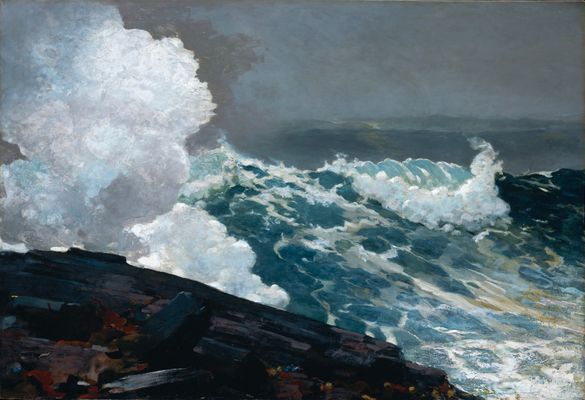3.1.3
Chapters 5-7
Chapters 5-7: Summary and Analysis
Chapters 5-7: Summary and Analysis
Here's a summary and an analysis of Chapters 5-7:


Plot summary
Plot summary
- The narrative perspective switches to Jonathan Harker’s fiancee, Mina Murray, and her good friend Lucy Westenra, who has received three marriage proposals in one day - one from Dr Jack Seward, who also lends his narration to the novel.
- Lucy and Mina travel to Whitby where Lucy begins to sleepwalk and a mighty storm coincides with Dracula’s arrival in England aboard the ship, The Demeter.


Mina Murray and Lucy Westenra
Mina Murray and Lucy Westenra
- Stoker quickly introduces his readers to several characters based in England who will take the narrative forward.
- Mina Murray is Jonathan’s fiancee and she acts as a literary foil to her good friend, Lucy Westenra.
- Whilst Lucy’s “Why can’t they let a girl marry three men, or as many as want her?” is meant in jest, a clear parallel can be drawn to the sexually liberated female-vampires and Lucy’s suggestion that polygamy should be socially acceptable.


Seward - science and technology
Seward - science and technology
- Jack Seward’s determination to busy himself with his work and his decision to continue his friendship with Arthur Holmwood, whose proposal Lucy accepts, reflects the typical stoicism expected of a Victorian Gentleman.
- Seward’s role in the novel is to represent the field of science and technology. He documents his journal using the phonograph (invented by Thomas Edison in 1877).


Seward's rational approach
Seward's rational approach
- Of all the characters in the ‘band of heroes’, it is Seward who struggles to accept the supernatural events, often desperately clinging to the hope that there must be a logical or rational explanation.
- It is only through the combination of science, technology with the more mystic knowledge (provided by Van Helsing) that they are able to triumph over Dracula.
Chapters 5-7: Analysis (Cont.)
Chapters 5-7: Analysis (Cont.)
Here's an analysis of Chapters 5-7:


Seward's rational approach
Seward's rational approach
- Chapter 6 introduces Renfield - one of Seward’s patients in his lunatic asylum.
- “Lunatic” derives from “lunacy” as it was believed that madness was connected to the lunar calendar. There is also a connection here to lycanthropy, the mythical transformation of a human into a wolf, one of the creatures Dracula is able to transform into - the newspaper report details how “an immense dog sprang up on deck from below” as The Demeter comes to rest on the Whitby sands.


“Zoophagous”
“Zoophagous”
- Renfield is classified by Seward as “a zoophagous(life-eating) maniac”.
- Unbeknownst to Seward, he has provided a scientific term for the vampire. “Zoophagous” was first coined c. 1825 - 1835 and there is an obvious connection between the clinically insane Renfield, who consumes flies, spiders and sparrows in order to “absorb as many lives as he can”, and the vampire, who must feed on fresh blood to sustain themselves.


Dracula’s arrival in Whitby
Dracula’s arrival in Whitby
- Dracula’s arrival in Whitby utilises pathetic fallacy and the storm evokes the Gothic trope of The Sublime - the awe-inspiring power of nature that is both deadly yet thrilling, as postulated by Edmund Burke in A Philosophical Enquiry into the Origin of Our Ideas of the Sublime and Beautiful (1757).


The Correspondent’s article
The Correspondent’s article
- The Correspondent’s article states how “One of the greatest and suddenest storms on record has just been experienced here, with results both strange and unique.”
- The superlative adjectives evoke the idea of the Sublime; the use of “strange” adds to the uncanniness of the storm, whilst coupled with “unique” also continues the theme of duality that is prevalent throughout Dracula.


Anthropomorphic foreshadowing
Anthropomorphic foreshadowing
- Anthropomorphic foreshadowing of the destruction Dracula intends to reap is also reflected in the Sublime description of how the storm caused the “lately glassy sea [to become] like a roaring and devouring monster.”
1Context - Gothic Literature
1.1Origins & Conventions of Gothic Literature
1.2Vampires in Gothic Literature
1.3'Terror' & 'Horror'
1.4Narrative Features
2Context - The Victorian Era
2.1The Victorian Era
3Chapter Summaries & Analyses
4Character Profiles
4.1Archetypal Gothic Characters
4.2Count Dracula
4.3Other Main Characters
4.4Minor Characters
5Key Ideas
6Writing Techniques
7Critical Debates & Interpretations
7.1Initial Reception of Dracula
7.2Modern Reception of Dracula
Jump to other topics
1Context - Gothic Literature
1.1Origins & Conventions of Gothic Literature
1.2Vampires in Gothic Literature
1.3'Terror' & 'Horror'
1.4Narrative Features
2Context - The Victorian Era
2.1The Victorian Era
3Chapter Summaries & Analyses
4Character Profiles
4.1Archetypal Gothic Characters
4.2Count Dracula
4.3Other Main Characters
4.4Minor Characters
5Key Ideas
6Writing Techniques
7Critical Debates & Interpretations
7.1Initial Reception of Dracula
7.2Modern Reception of Dracula
Unlock your full potential with Seneca Premium
Unlimited access to 10,000+ open-ended exam questions
Mini-mock exams based on your study history
Unlock 800+ premium courses & e-books